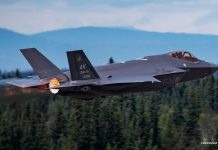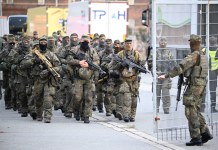US stealth fighter jets have soared the skies undetected for nearly half a century. However, this could soon change as arch-rival Russia continues to develop advanced air defense missiles.
- Latest Pictures Of China’s Third Aircraft Carrier Displays Its ‘Staggering Success’ To Challenge US Naval Might
- Japan’s ‘Desperate Call’ To Indian Air Force To Tackle Growing Menace Of Chinese Fighter Jets
Stealth or “low observable” technology dates back to the 1940s when the US came out with an experimental design, but the same was scrapped within two years. The experimental YB-49 designed by Jack Northrop in 1947 had a minuscule signature on radar screens.
The importance of such technology was not realized until the 1970s when US aerospace company Lockheed developed a prototype of what was called the F-117 Nighthawk.
The image of American ‘aerial invisibility’, however, was shattered with the downing of an F-117 Nighthawk by a Serbian military officer in 1999 using a Soviet air defense system.
Since then, the US has invested heavily in the research and development of stealth technology to make some of its fighter jets “truly stealth”.
The Stealth Technology
It was in the 1970s that the urgency of developing a stealth fighter jet was felt, and the Defense Advanced Research Projects Agency (DARPA) began working on it. Lockheed Martin and Northrop were selected to work on the project. Both aerospace companies took different approaches towards R&D.
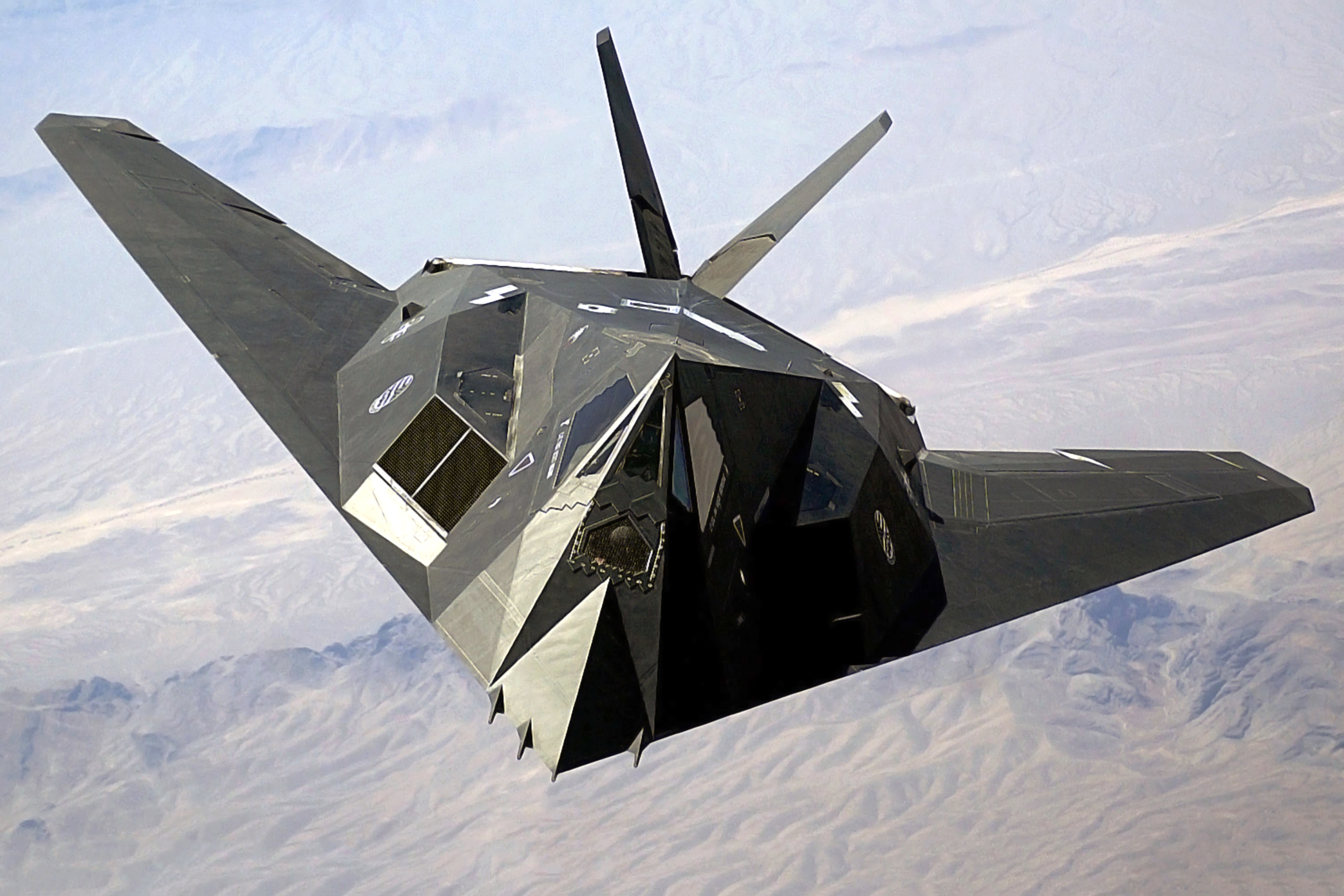
Lockheed incorporated the hypothesis made by the Russian physicist as part of a computer program called Echo 1. This proved to be a breakthrough for Lockheed allowing it to effectively compute the radar cross-section (RCS) from different angles and wavelengths.
However, the process had its challenges owing to computing limitations.
Meanwhile, Northrop modeled the compound curves and shaped the edges of the aircraft to attempt stealth. The resulting prototype of the B-2 bomber resembled the YB-49 made by the company’s founder in the 40s.
US Military ‘Gifts’ Arms, Ammunitions, Aircraft To Taliban As It Leaves Afghanistan – WATCH
Both prototypes were compared in a ‘pole off’ and ended with Lockheed being awarded the contract.
Northrop’s R&D was not without its merits as the company secured a contract with DARPA in 1978 to design the Battlefield Surveillance Aircraft (BSAX) as part of the agency’s larger Assault Breaker program which was in response to a potential tank invasion from Europe.
This Lockheed prototype called ‘Have Blue’ underwent flight testing in April 1977. This demonstrator was covered with facets and set at odd angles to scatter radar beams away from the aircraft’s body and was about 60% the size of the operational F-117 Nighthawk which took its maiden flight in 1981.
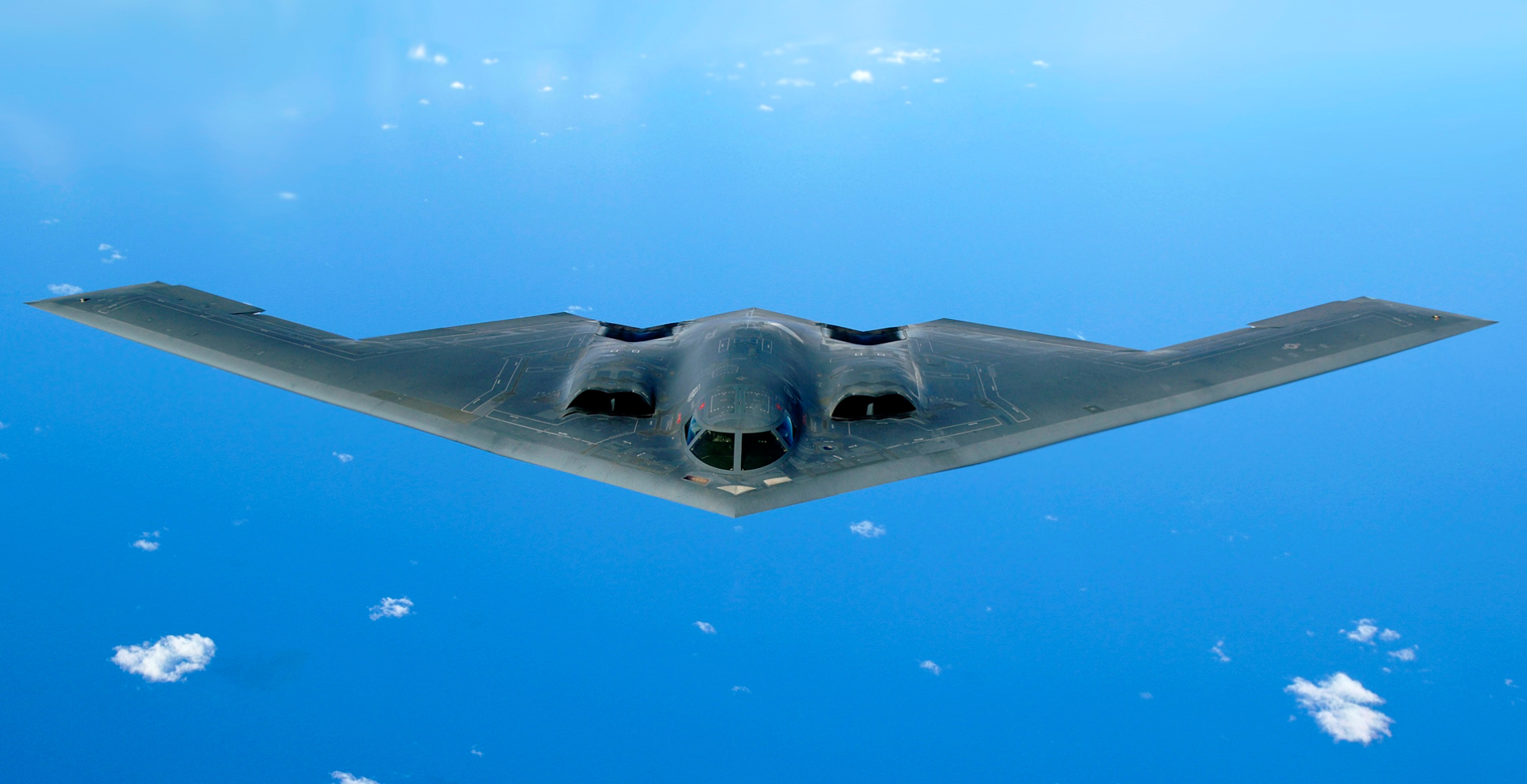
Interestingly the F-117 was designated as a fighter aircraft despite being an attack aircraft. However, General Robert J. Dixon at Tactical Air Command had believed that an “F” (for fighter) designation would be more attractive to the best pilots than would an “A” (for attack).
But, despite semantics, the F-117 was not meant for aerial combat and was simply designed to drop bombs. The Nighthawks were deployed in Saudi Arabia as part of ‘Operation Desert Shield’.
Northrop was awarded another contract to develop the Advanced Technology Bomber in 1981, the prototype was flight-tested in 1982 and was christened as the B-2 bomber in 1984.
F-22 & F-35 Stealth Fighter Jets
Both the F-117 and the B-2 displayed stellar performances in the Gulf war and the Balkans conflict and paved the way for the next generation of stealth fighters in the form of the F-22 Raptor designed by Lockheed Martin.
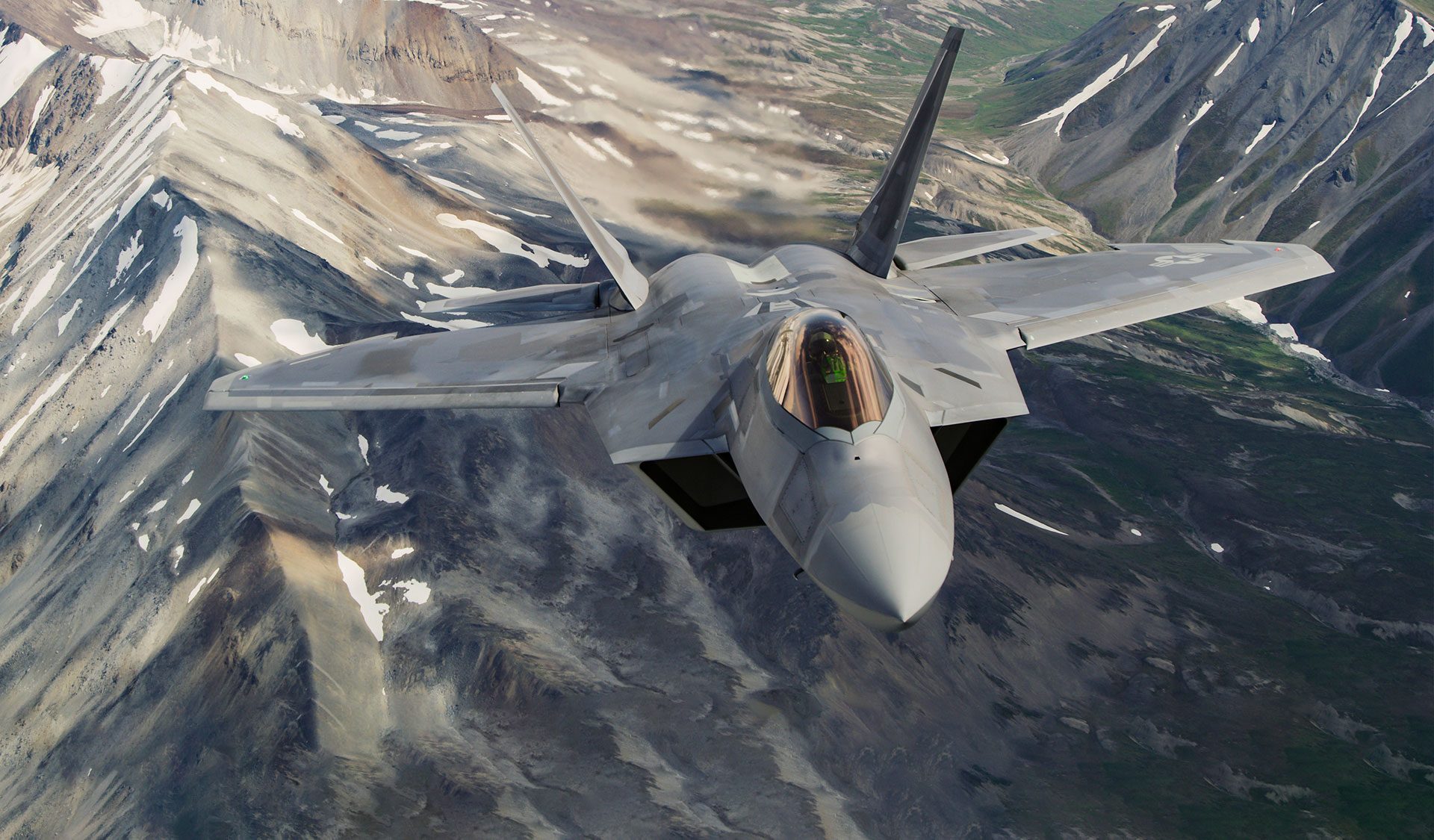
The Raptor was an air-to-air fighter jet, which took its maiden flight in 1997, its RCS is compared to the size of a golf ball or a bee.
The F-35 Joint Strike Fighter soon followed and took its maiden flight in 2006. The aircraft is meant for aerial combat and ground attack missions and is in use by the United States Navy, Marine Corps and Air Force.
The initial tradeoff for stealth was speed. However, with modern technology, this is no longer as prevalent as F-22s can now reach Mach 2 speeds whereas the F-35s can go up to Mach 1.6 speeds.
Northrop is currently designing the B-2 bomber’s successor, the Grumman B-21 Raider, which is slated to enter flight testing this year.
When ‘Stealth Fighter Jet’ Was Shot-Down
The downing of an American F-117 Nighthawk by Col. Zoltán Dani, commander of the 250th Air Defense Missile Brigade, in Yugoslavia lifted the veil of invincibility of stealth.

The Serbian military officer had extensively studied western Suppression of Enemy Air Defense (SEAD) concepts and his professional acumen, unconventional mobile air defense tactics, and actionable intelligence over Nighthawk flight patterns on March 27, 1999, led to the downing of the F-117 by a Soviet-era S-125.
The incident happened at a time when the ‘stealth technology’ was being labeled as a ground-breaking innovation that would help fighter jets avoid being detected.
While the USAF has invested heavily in the development of hi-tech features in combat jets, the Nighthawk was possibly the first fighter to exploit the low-observable stealth technology.
The precision-strike combat jet boasted the ability to penetrate high-threat airspace and used laser-guided weapons against vital targets. However, the incident on March 27, 1999, when the US stealth jet was shot down, proved otherwise.
Russian Missiles Vs US Sealth Jets
The Russian S-400 ‘Triumf’ SAM and the US F-35 jet have often been pitted together in hypothetical combat scenarios.
SAM sites are often clubbed together with similar missile facilities, radar stations, command, and control posts, and are in proximity to nearby air force stations. These elements are collectively referred to as Integrated Air Defense Systems (IADS).
This makes an IADS very deadly for fighter aircraft, including F-35, as multiple SAMs may lay in wait for an ambush by turning off their radar systems, allowing it to remain undetected.
Simultaneously, other radar systems within the IADS framework can relay targeting information about approaching aircraft to the SAMs. Deterrence lies in avoidance.
The F-35’s options remain limited as Russia has a vast array of IADBs spanning across the country’s territory. These are manned by approximately 45 battalions of the S-400, dozens of older S-300s, and other short-range SAM platforms. Some experts believe that Russian ABM radars can detect F-35s.
The S-400 boasts an exceptional operational range and is armed with 40N6 long-range missiles which have 400 Kilometers range. Furthermore, average S-400 batteries generally have a plethora of munitions accounting for different threats including ones ranging from stealth aircraft and radar jamming.
The 40N6 missile for the S-400 air-defense system can eliminate E3-Sentry (AWACS), E-8 Joint Surveillance Target Attack Radar System (STARS), and the RC-135 Rivet Joint ‘Airseeker’ spy plane.
While the S-400’s 9M96 and 48N6 missiles, which boast operational ranges between 100 and 200 km, are potent against fighter aircraft. The 9M96 in particular can turn 20G and attack both hostile aircraft and cruise missiles as low as five meters above the ground. This makes terrain masking a questionable counter-air defense tactic against the S-400.
Can F-35s Defeat S-400s?
The F-35’s Joint Standoff Weapon (JSOW) and the Small Diameter Bomb (SDB) are the stealth fighter’s primary standoff weapons. Both are glide bombs, whose range depends on the range the aircraft is cruising at. F-35s can typically carry about eight SDBs and as compared to JSOWs.
There is a view that the F-35’s stealth profile is not enough for it to fly past an S-400 undetected. So, any operation will be an offensive one with at least a dozen F-35s flying armed with SDBs and decoys along with the support of EA-18g Growlers rigged with jamming pods and anti-radiation missiles.
These aircraft would have to fly low, under the radar as long as possible before launching the decoys to fool hostile radars to turn and reveal their location before attempting to eliminate them with HARM anti-radiation missiles from the accompanying EA-18s. Such a battlefield scenario may destroy the S-400 site but will incur exorbitant costs to both aircraft and pilots and is unlikely to be acceptable to any mission commander.
Adding to Russia’s expansive air defense capabilities is the latest S-500 ‘Prometey’, which Moscow tested last month and made public a video of the exercise. A Russian Airforce Commander proclaimed that the S-500 is the solution to all of Russia’s missile defense problems.
Reports indicate that the S-500 has an interception radius of 600 km and is capable of neutralizing aerial threats ranging from hypersonic ballistic missiles, cruise missiles, planes, helicopters and even combat drones. The S-500 is expected to be inducted into Russian Air Defence and Missile Defence units near Moscow by 2025.
The US’ Jittery Over S-400
The Russian S-400 air defense system has been at the center of a geopolitical with Washington vehemently opposing any of its allies evincing interest in this missile system.
The US has already imposed sanctions on Turkey, its NATO ally, over procurement of S-400 and is upset over India’s deal with Russia. Reports suggest India will receive these SAMs by the end of this year. These moves are indicative of American military insecurity over the S-400 platform.
Military analysts speculate Washington fears its stealth technology could be stolen by Russia, which could be used to make S-400 or S-500 more powerful than what they are currently.
- Aritra Banerjee is a defense journalist who has worked in both online and print media. He has laid an emphasis on issues related to military human resources, tactical psychology, military-media relations, professional military education, and combat fitness. He can be reached on email: aritrareporter@gmail.com. Twitter: @Aritrabanned
- Follow EurAsian Times on Google News

